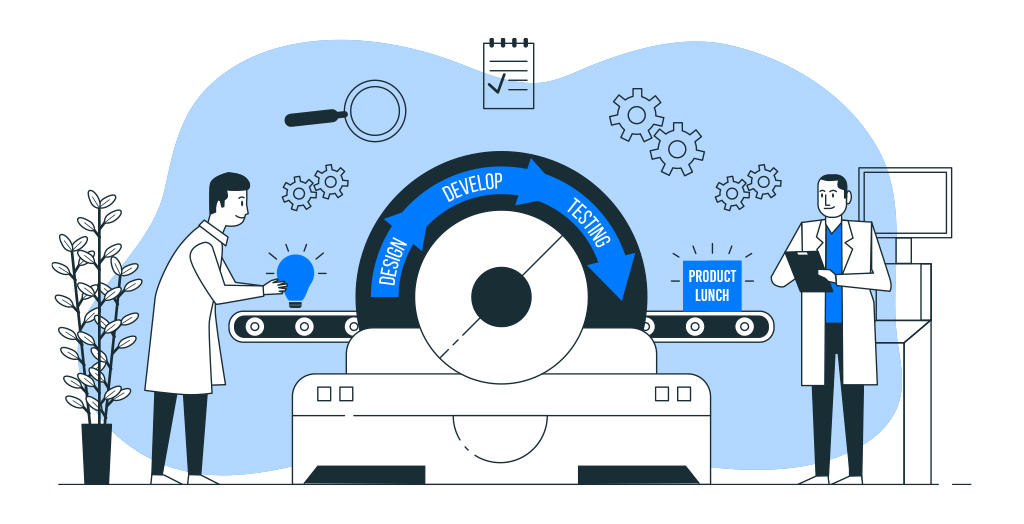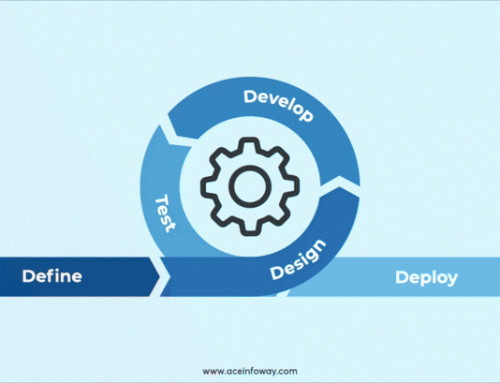Table of Contents
“Myths are a waste of time. They prevent progression.”- Barbra Streisand (An American Filmmaker and Actress)
The quote goes hand in hand with the product development project execution. Myths related to product development project execution can negatively impact both process progression and product delivery in the face of exceeding budgets and deadlines, and resource shortages, as well as poor user experiences.
Several myths about product development circulate in the market for a variety of reasons. Among these, the most common reason is that some product development managers see hardware and software products on the same scale, thus treating the software product development in the same way. This results in delays and failures of projects.
Product development managers must grasp the nuances of both hardware and software development in order to deliver the best customer experience. Unlike hardware products, software products require unique tasks and are constantly evolving. On the flip side, the tasks in hardware product development are largely repetitive and predictable.
As you’ve landed on this page, it’s likely that you’re heading towards developing your product. A product development process can be truly challenging for a business, and myths tend to further complicate the process. For you to avoid any problem with your product, it would be a good idea to gain knowledge of these myths beforehand. To help you with the same, here we’ve discussed some of the biggest myths of product development and how you can combat them effectively.
6 Biggest Myths of Product Development
Myth 1: The Myth of Using More Resources
One of the biggest myths in the list is related to the productivity of the product development process. It is a common misconception that all efforts and resources produce the same level of productivity. However, the situation is different in reality.
To put it simply, it depends on the type of task you are pursuing. For example, if it is an accounting task, 10% of additional work takes 10% extra time and effort. On the contrary, if it’s about the software project, 10% of additional work could take up to 50% extra resources. Hence, you can take this scenario as vice-versa.
Every work does not require the same amount of resources. And sometimes even after utilizing 100% of resources cannot reap the desired result, instead, it might cause an adverse effect on the team leading to burnout of the team, thereby negatively impacting their performance and productivity.
Myth 2: The Myth of Working with Large Task Batches
Do you also think big batches of the tasks speed up the product development process?
It is a belief shared by many product developers. As a result, they try to find ways to handle large quantities of product development tasks at the same time. Perhaps we can attribute this belief to the fact that similar tasks are performed once; you need not switch between different tasks.
While this concept might apply to hardware products, it does not work in the same way for software products. As an example, suppose you are developing a product that consists of 100 components. You decide to design and code all the modules at once, then test them later.
This creates a queue of tasks and tends to block the resources for a considerable amount of time, which prevents you use them for other products. Also, what if an error occurs in a few components that affect all the other modules, thereby the entire product? You will have to make changes in all the modules, which will again take the same amount of effort and time.
The best way to prevent this is to build your product in parts, like for in this case 20 components at a time. Design and build 20 components first and push them for testing. This can benefit you in numerous ways.
Firstly, it will reduce the batch size as well as the queue time for you. Secondly, you will be able to make the adjustments at a faster pace. And, lastly, it will give you early feedback. This approach can reduce the cycle time by as much as 95%, defects by more than 30%, and improve efficiency by more than 200%.
Myth 3: The Myth of Sticking to the Plan
“Just because you made a good plan, doesn’t mean that’s what’s gonna happen.”
The quote above is from the well-known American singer-songwriter Taylor Swift, which holds true for product development. Some product developers believe that making a solid plan and then sticking to it can lead to a flawless product. Hence, the product developers and managers work their fingers to bones to keep up with the plan.
While it may work for a few cases that use highly repetitive activities in the process, it is not appropriate for every product. There are times when a product idea looks great during designing and development, but during the testing process, everything goes upside down. You will have to make changes to the existing plan to make things work.
It is imperative that you remain flexible in the face of changing needs and circumstances, including updating your plan or, if necessary, considering alternative plans. Understand that in the product development process, the plan is definitely useful, but it is more of a hypothesis than anything else.
Myth 4: The Myth of Early Start
Another myth that leads to delay in product development is related to the commencement of the product development process. Every minute is valuable to a project manager, so as soon as a project is completed, they immediately begin developing the new product without even making the necessary preparations. They think that the sooner they will start developing their product the earlier they’ll be able to complete it.
The reality, however, is a completely different story. In fact, multiple problems can arise in the product development process when an early start is unplanned, such as-
- Slow development process due to unavailability of resources.
- A rapidly changing market might consider your product irrelevant.
- Technology assumed might become outdated.
- Budget and schedule overruns
Therefore, the product developers should not try to manage resources between multiple products forcefully, just to start a new project early. Instead, they can focus on reducing the cycle. Make sure you take on a few projects at a time so that the ongoing work can be maintained.
Myth 5: The Myth of Bulk Features
There is a widespread myth that the number of features in a product determines its level of satisfaction with users. The truth is that the user’s satisfaction solely depends upon the performance of your product and whether the product is able to address their needs or not.
Hence to make your product successful, instead of focusing on the number of features, you should include the features that are necessary and relevant to your product idea. One of the best ways is to develop an MVP(Minimum Viable Product) for your customer/client. Creating an MVP allows you to get real feedback from your potential clients, letting you know what they need, and then build a final product based on what everyone agrees the final product should look like.
Developing unnecessary features will not only waste your time but also cause a negative impact on the user experience, making the product complex to use. The goal should be to simplify the user’s problem or meet their needs, rather than just stuffing the product with features. As a project manager, you should focus on two major criteria-
- Define the features that you want to include in your product.
- List and define the features you want to hide or omit from your product.
Discover the sweet spot of your product, that is, sufficient features that will attract consumers without sacrificing their experience. You can seek help from a professional designer or engineer to identify this sweet spot and help to create a more profitable and efficient product development process.
Myth 6: The Myth of the Perfect Product
Every project manager tries hard to launch the perfect product in one go, to do which, they push their teams to deliver the perfect product for the first time. In fact, they do not release the final product until they find it right the first time. This tends to hold the product back from meeting its budget and schedule.
According to Reid Garrett Hoffman( Entrepreneur, a venture capitalist, and author)- “If you are not embarrassed by the first version of your product, you’ve launched too late.” You could have launched your product early and explored new potentials of your product.
Hence, do not expect to release the final and perfect version of your product all at once. No matter how hard you try, you can never do this. There is always a scope for changes and improvements in a product. Hence, delaying the product for this cause is not a good idea.
Are you Ready to Embark on your Product Development Journey?
If you are involved in product development at all there is an extremely high probability that you have already encountered these product development-related myths. As a product development manager, you will face challenges along the way. But if you learn to take a step back and look at the myths you’ve woven around your product, you’ll find that your road to success will be a much smoother one.
The article might have acquainted you with some of the most popular myths of product development and guided you well to deal with them. If, however, you need assistance with your product development projects, we can help. Our certified product engineering experts provide you with support throughout the product lifecycle, from ideation through development and launch.

























